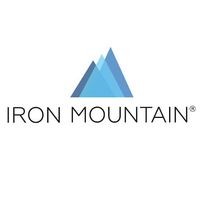
Iron Mountain
For over 70 years, Iron Mountain Incorporated (NYSE: IRM) has been your strategic partner to care for your information and assets. A global leader in storage and information management services and trusted by more than 225,000 organizations around the world, including 95% of the Fortune 1000, we protect, unlock, and extend the value of your work—whatever it is, wherever it is, however it’s stored. We create the framework necessary to bridge the gaps between paper, digital, media, and physical data and extract value along its lifecycle, helping to build your organizational resilience. And all this with a commitment to sustainability at our core. Our relationship is a true partnership where you trust us not only to preserve institutional knowledge and enhance efficiency, security, and access but to make your work mean more. Because in that work is the power to not only accelerate your business, but elevate it. Elevate the power of your work.






